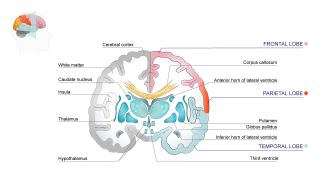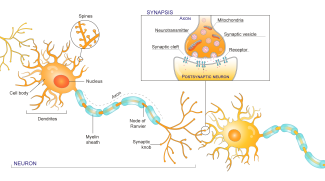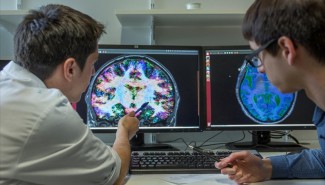Every day, scientific research tells us a little more about the brain, the body’s control room for all cognition, memory and emotions. From the anatomy of the brain to the latest knowledge about consciousness and the different neurological diseases, you can learn more about the brain here.
Why try to understand the brain?
In philosophical terms, the brain is the organ of perception, thought and action. It is what helps to make life meaningful.
Sociologically speaking, the brain is the body’s orchestra conductor, but it is also conducting itself. It is responsible for our behaviour, and therefore for our interactions with other members of society.
Scientifically speaking, the brain represents a major challenge, because there are still many mysteries surrounding its development, its normal and pathological functioning and its adaptability. It is vital that we uncover the mechanisms involved in the genesis of our intellectual faculties and our emotions, and the motor behaviours that express them.
The medical challenge of today is therefore to understand the diseased brain in neurological diseases such as Alzheimer’s, Parkinson’s, ALS, multiple sclerosis and epilepsy, and psychiatric disorders such depression, schizophrenia, autism and OCD, so that we can develop the treatments of tomorrow.
This is the mission of Paris Brain Institute, home to leading science and medicine practitioners within the Pitié-Salpêtrière AP-HP Hospital in Paris. This hospital is well known for the quality of care it provides and receives support from CNRS and INSERM, France’s national research bodies, as well as Sorbonne University, in turn renowned for the quality of its scientific training.
To promote the rapid discovery and exploration of new therapeutic approaches, Paris Brain Institute hosts new start-ups within an incubator. It boasts over 500 laboratory researchers whose research is then applied to patients at its Clinical Investigation Centre.
What is the brain?
The brain and the spinal cord make up the central nervous system, which is capable of assimilating information, controlling motor skills and performing cognitive functions.
The brain weighs around 1.3 kg (75% of which is water) and is the body’s best protected organ, partly because it is surrounded by cerebrospinal fluid to reduce the effects of impacts and also due to its covering of three layers of tissue called the meninges. It consumes 15–20% of the energy produced by the body – mainly glucose, a simple sugar found in the diet. A large network of blood vessels spans the brain, allowing a large amount of oxygen to be supplied.
The brain consists of two hemispheres (left and right) connected by the corpus callosum. Each brain hemisphere is formed of the frontal lobe, where reasoning, language function and voluntary motor coordination are controlled; the parietal lobe, the centre of consciousness of the body and its surroundings; the occipital lobe, the brain’s message processing area; the temporal lobe, the centre of hearing, memory and emotions; the limbic lobe, which processes emotions, feelings and memory; and the insula lobe, which processes pain, smells and taste.
The cerebellum controls our balance and coordinates our movements, while the brain stem acts as a crossing point between the brain hemispheres and the spinal cord.

The lobes of the brain are linked to specific areas
The brain has 100 billion nerve cells known as neurons that create a very specific wired network. The myelin is the protective sheath covering the axons of the neurons, which enables nerve impulses to be transmitted. It is made up of oligodendrocytes. Together with astrocytes and microglia, these are called glial cells, which are as numerous as neurons. The brain also contains the cortex, or grey matter: this is the outermost part of the brain because of the presence of the cell bodies of neurons. It also contains white matter, which contains extensions of nerve cells (nerve fibres, or axons) surrounded by a myelin sheath. It also contains four cerebral ventricles, cavities where cerebrospinal fluid circulates. Finally, at the centre are the basal nuclei, also called the basal ganglia, which are involved in controlling our behaviour and in learning.

The brain contains numerous sub-structures
The brain: a communications expert
Neurons communicate with each other via electrical signals called nerve impulses (or action potentials).Each neuron consists of a cell body, extensions called dendrites and axons. These axons emit connections with other neurons through the synapses.

The neuron (left) and the synapse (right)
The nerve impulse travels along the axon and ends its journey at the synaptic knob. The higher the frequency, the more chemical substances the neuron produces: neurotransmitters (or neuromodulators).
These neurotransmitters, which sit within the vesicles, are released into the extracellular medium at the synapse and will in turn activate or inhibit a second neuron at the point of its dendrite or cell body. The nerve impulse then resumes its journey along this second neuron, and so it continues.
There are several types of neurotransmitters. Some can be excitatory, like glutamate, or inhibitory like GABA. The best-known neurotransmitters include dopamine, serotonin, histamine and acetylcholine. The neurons responsible for producing dopamine (located deep within the brain, in the ‘dark matter,’ or ‘substantia nigra’) are essential for controlling movement.
Brain Development
The nervous system is made up of a wide variety of structures and cell types. During development, the nervous system is formed from just a few cells. The brain regions become differentiated gradually through a phenomenon called regionalisation. The cells differentiate from each other according to their position in the developing nervous system. This process is controlled by a set of genes that behave in a very specific and coordinated, timely way. These newly formed brain regions will then connect with each other and will specialise in specific functions.
Bassem Hassen’s research team studies the formation of neurons and neural networks during brain development. This team’s research recently uncovered essential mechanisms that regulate the production of neurons via precise temporal control of the activity of certain essential proteins.
Brain Plasticity
Our brain’s connections are dynamic and constantly evolving to assimilate our life experiences and learning. Although there are critical periods of brain plasticity during childhood, our brains remain plastic even in adulthood. Most remodelling of neural networks in adults involves recycling synapses – the connection points between neurons. Glial cells also play a critical role in brain plasticity. They are highly mobile in the brain and can be recruited from specific parts of the brain in order to form new synaptic connections.
The researchers at Paris Brain Institute are pioneers in ‘brain plasticity’. Alberto Bacci’s team is studying microcircuits in the cerebral cortex, particularly synapses between different types of neurons, leading to specific circuits in the brain cortex.
The focus of Nicolas Renier’s team is on studying the mechanisms that control the processes involved in neuronal extensions in adult brains, to uncover new knowledge about how neurons interact, about the vascular system during plasticity processes and to map neuronal markers and whole-brain connections.
Processing sensory information is a fundamental function of our brains, and it is vital for our day-to-day actions. Most of this essential brain function relies on its fundamental functional unit, consisting of the neuron and its synaptic connections. Nelson Rebola’s team focuses on studying the cellular and molecular mechanisms that influence how our brains process sensory information, and which ultimately drive our behaviours.
Support Paris Brain Institute
If you liked this content and it helped answer your questions, please consider supporting Paris Brain Institute.







